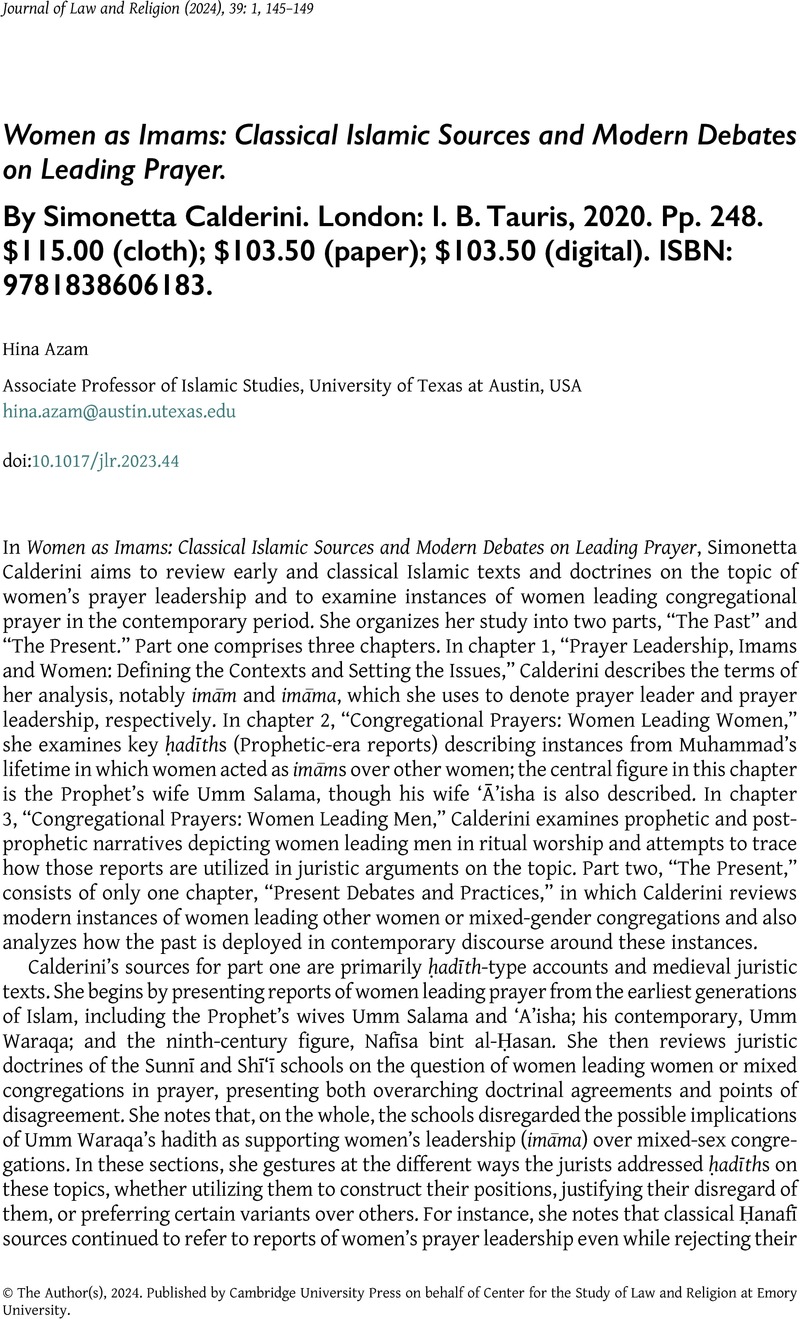No CrossRef data available.
Article contents
Women as Imams: Classical Islamic Sources and Modern Debates on Leading Prayer. By Simonetta Calderini. London: I. B. Tauris, 2020. Pp. 248. $115.00 (cloth); $103.50 (paper); $103.50 (digital). ISBN: 9781838606183.
Review products
Women as Imams: Classical Islamic Sources and Modern Debates on Leading Prayer. By Simonetta Calderini. London: I. B. Tauris, 2020. Pp. 248. $115.00 (cloth); $103.50 (paper); $103.50 (digital). ISBN: 9781838606183.
Published online by Cambridge University Press: 19 March 2024
Abstract
An abstract is not available for this content so a preview has been provided. Please use the Get access link above for information on how to access this content.

Information
- Type
- Book Review
- Information
- Copyright
- © The Author(s), 2024. Published by Cambridge University Press on behalf of Center for the Study of Law and Religion at Emory University


